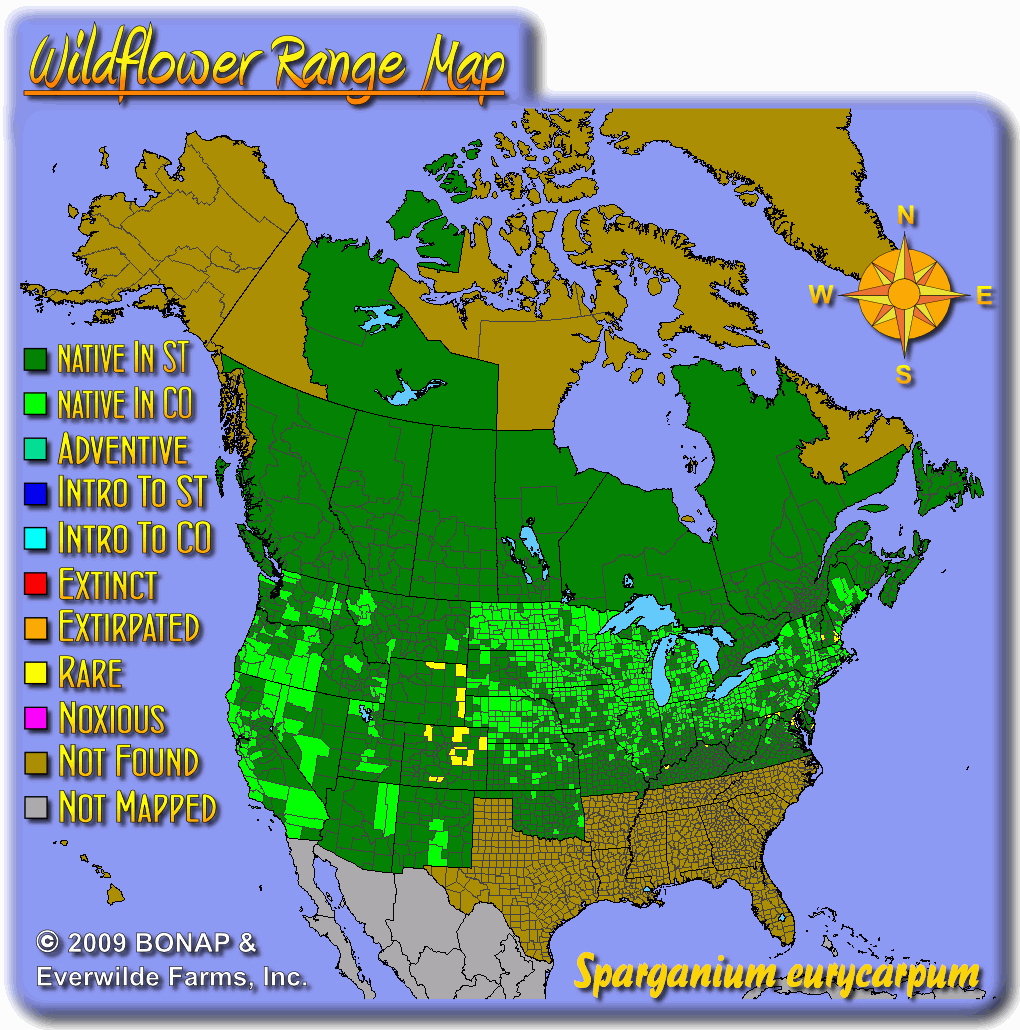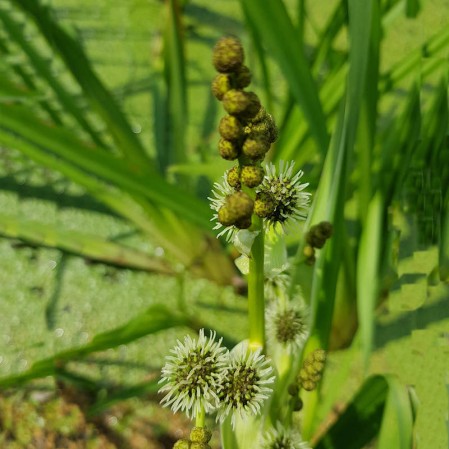Great Bur Reed Seeds
Sparganium eurycarpum
- HOW TO GROW
- FAST FACTS
HOW TO GROW
Sowing: To break their dormancy, these seeds need to experience cold and warm moist periods followed by another period of cold moisture. Mix the seeds with a small amount of damp sand and place in a sealed plastic bag; store in a refrigerator for 30 days, then at 70-75 degrees F for 30 days, with a final period of 30 days in the refrigerator. Sow the seed 1/2" deep in a germination flat, keeping the soil lightly moist and at room temperature until germination. Alternatively, this seed can be direct sowed outdoors in late fall and allowed up to two years to germinate.
Growing: As the plants grow, keep the soil consistently saturated; the water depth can be increased as the plant develops. This plant thrives either at water's edge or in shallow, still water. It also tolerates sandy or rocky soil with enough moisture. This plant will eventually spread by rhizomes and by self-seeding.
Harvesting: For fresh bouquets, choose blossoms that have just opened and place in water immediately. This plant also makes an excellent choice for dried flower arrangements.
Seed Saving: The spiky white heads of this plant will eventually turn brown; they should be gathered before they begin to crumble. Cut the seed heads and separate the seed from the husks. For best germination, plant the seed immediately. If storing the seed, keep it moist and refrigerated until planting.
FAST FACTS
Common Names: Broad-fruited Bur Reed, Common Bur Reed, Giant Bur Reed
Latin Name: Sparganium eurycarpum
Species Origin: US Native Wildflower
Type: Native Wildflowers
Life Cycle: Perennial
USDA Zones: 2, 3, 4, 5, 6, 7, 8, 9, 10, 11
US Regions: California, Mountain, Arid/Desert, Plains/Texas, Midwest, Northern, Northeast
Seeds per Ounce: 1,600
Stratification: Cold/Wet for 12 Weeks, then Warm/Wet for 12 Weeks - Repeat
Germination Ease: Stratify 24 Weeks
Sunlight: Full Sun
Height: 48 Inches
Color: White
Bloom Season: Blooms Early Summer, Blooms Late Summer
DESCRIPTION

HOW TO GROW
Sowing: To break their dormancy, these seeds need to experience cold and warm moist periods followed by another period of cold moisture. Mix the seeds with a small amount of damp sand and place in a sealed plastic bag; store in a refrigerator for 30 days, then at 70-75 degrees F for 30 days, with a final period of 30 days in the refrigerator. Sow the seed 1/2" deep in a germination flat, keeping the soil lightly moist and at room temperature until germination. Alternatively, this seed can be direct sowed outdoors in late fall and allowed up to two years to germinate.
Growing: As the plants grow, keep the soil consistently saturated; the water depth can be increased as the plant develops. This plant thrives either at water's edge or in shallow, still water. It also tolerates sandy or rocky soil with enough moisture. This plant will eventually spread by rhizomes and by self-seeding.
Harvesting: For fresh bouquets, choose blossoms that have just opened and place in water immediately. This plant also makes an excellent choice for dried flower arrangements.
Seed Saving: The spiky white heads of this plant will eventually turn brown; they should be gathered before they begin to crumble. Cut the seed heads and separate the seed from the husks. For best germination, plant the seed immediately. If storing the seed, keep it moist and refrigerated until planting.
FAST FACTS
Common Names: Broad-fruited Bur Reed, Common Bur Reed, Giant Bur Reed
Latin Name: Sparganium eurycarpum
Species Origin: US Native Wildflower
Type: Native Wildflowers
Life Cycle: Perennial
USDA Zones: 2, 3, 4, 5, 6, 7, 8, 9, 10, 11
US Regions: California, Mountain, Arid/Desert, Plains/Texas, Midwest, Northern, Northeast
Seeds per Ounce: 1,600
Stratification: Cold/Wet for 12 Weeks, then Warm/Wet for 12 Weeks - Repeat
Germination Ease: Stratify 24 Weeks
Sunlight: Full Sun
Height: 48 Inches
Color: White
Bloom Season: Blooms Early Summer, Blooms Late Summer





